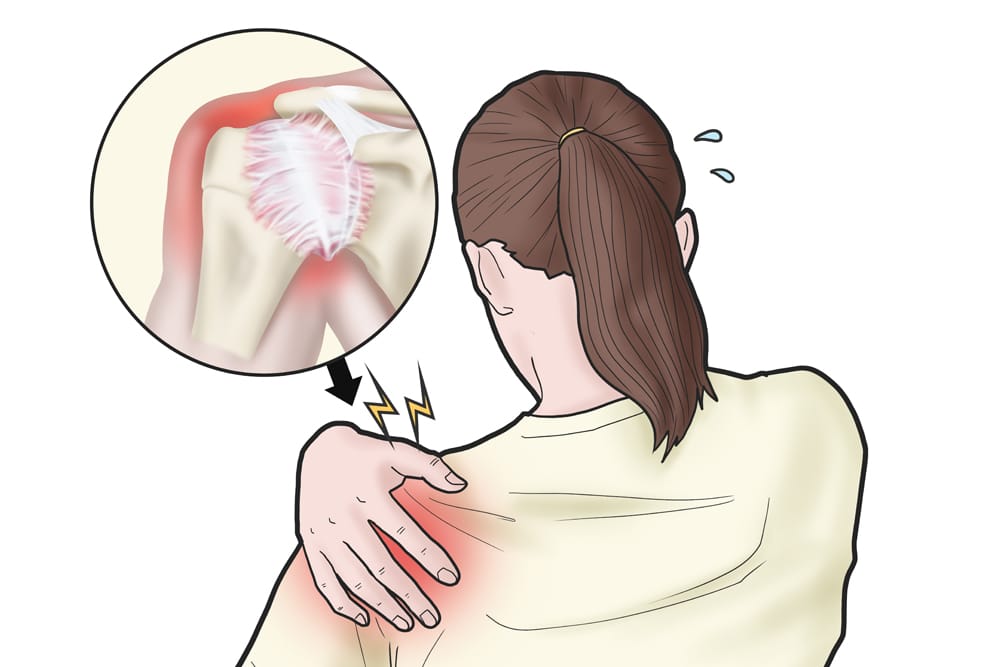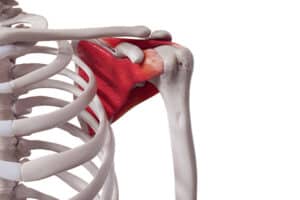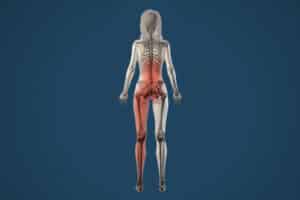Frozen shoulder, also known as adhesive capsulitis, is a condition characterized by stiffness and pain in the shoulder joint. It typically develops gradually, gets worse over time, and then resolves, often taking one to three years to reach its course. This condition can significantly impact an individual’s daily activities and quality of life, making even simple tasks challenging. Physiotherapy has been shown to be a highly effective method for managing and rehabilitating frozen shoulder, offering hope for those affected.
Frozen Shoulder Cause
The exact cause of frozen shoulder is not well understood, but it is believed to involve inflammation, thickening, and tightening of the capsule around the shoulder joint.
“Frozen shoulder results from the gradual loss of movement in the shoulder (glenohumeral) joint. This joint consists of a ball (the humeral head) and socket (the glenoid). Normally it is one of the most mobile joints in the body. When the shoulder is frozen, the joint has become stuck and its movement is limited.”
Johns Hopkins Medicine
Frozen Shoulder Diagnosis
Normally, you never realize how much you move your shoulder every day until you experience pain and discomfort or find yourself completely unable to move your shoulder. Various shoulder conditions can result in decreased mobility, pain, and stiffness within the joint. Among the most frequently treated conditions are rotator cuff injuries, frozen shoulder, and shoulder impingement syndrome. These conditions often get mistaken for one another. Typically, a diagnosis of frozen shoulder can be made based on the presenting signs and symptoms. However, to exclude other potential issues, diagnostic imaging tests like X-rays, ultrasound, or MRI may be utilized.
Understanding Frozen Shoulder
Frozen shoulder typically progresses through three stages.
The freezing stage: This stage is when the shoulder becomes increasingly stiff and very painful. You lose range of motion and the constant pain may disturb sleep.
The frozen stage: This stage immediately follows the freezing stage and is usually less painful, though the stiffness remains and using the shoulder is difficult.
The thawing stage: This stage is where the pain continues to reduce. The shoulder slowly improves with either a complete return to normal or close to normal strength and motion.
Each of these stages can last several months.
Frozen Shoulder Risk Factors
Frozen shoulder is a condition that can affect anyone, but certain factors increase the likelihood of developing it. Understanding these risk factors is crucial for prevention and early intervention. Here are some of the key risk factors associated with frozen shoulder:
Age and Gender: Frozen shoulder most commonly affects people between the ages of 40 and 60, with a higher prevalence in women than in men.
Immobility or Reduced Mobility: Prolonged immobility or reduced mobility of the shoulder – which can occur due to several reasons such as a rotator cuff injury, broken arm, stroke, or recovery from surgery – significantly increases the risk of developing frozen shoulder.
Systemic Conditions: Certain medical conditions are associated with an increased risk of developing frozen shoulder. These include diabetes (people with diabetes are at a higher risk, and the condition tends to be more severe and longer lasting in this group), thyroid disorders (both hyperthyroidism and hypothyroidism), and cardiovascular disease.
Other Health Conditions: Conditions such as Parkinson’s disease and systemic lupus erythematosus (SLE) have also been linked to an increased risk of frozen shoulder.
Trauma or Surgery: Individuals who have had shoulder trauma or surgery may develop frozen shoulder during the recovery period because of immobility.
Genetic Predisposition: There may be a genetic component to frozen shoulder, as the condition appears to be more common in certain families.
Understanding these risk factors is important for individuals in high-risk groups. They should be proactive about shoulder health, especially during recovery from shoulder injuries or surgery and in managing chronic conditions such as diabetes and thyroid disorders. Early physiotherapy intervention and maintaining shoulder mobility through appropriate exercises can be effective strategies for prevention and management if you’re at higher risk for frozen shoulder.
The Role of Physiotherapy in Rehabilitation
Physiotherapy plays a crucial role in the treatment of frozen shoulder by focusing on restoring joint mobility, reducing pain, and improving function. The approach is tailored to the individual’s condition and stage of frozen shoulder, ensuring the treatment is both effective and appropriate. Here’s how physiotherapy can help:
Pain Management: Techniques such as heat application, TENS (Transcutaneous Electrical Nerve Stimulation), and ultrasound therapy can help reduce pain and inflammation in the affected shoulder.
Manual Therapy: Hands-on techniques are used by physiotherapists to mobilize the joints and soft tissues in the shoulder. This helps to increase the range of motion and decrease pain.
Stretching Exercises: Specific exercises aimed at stretching the shoulder joint capsule can help improve flexibility and range of motion. These exercises are crucial during the thawing stage to restore normal shoulder movement. Here’s some Frozen Shoulder Stretches that you can try.
Strengthening Exercises: Once the range of motion starts to improve, targeted exercises to strengthen the muscles around the shoulder joint are introduced. This helps support the joint, improves functionality, and prevents future injuries.
Education and Self-Management: Physiotherapists provide valuable advice on activity modification and ergonomics to manage pain and prevent aggravating the condition. They also teach self-help techniques to continue treatment at home, which is vital for long-term improvement.
Physio Offers the Best Treatment for Frozen Shoulder
Frozen shoulder can be a debilitating condition but, with the right approach, it is manageable. Physiotherapy offers a comprehensive treatment method that not only alleviates the symptoms, but also addresses the root cause of the condition. By employing a combination of pain management techniques, manual therapy, targeted exercises, and patient education, physiotherapy can effectively rehabilitate individuals suffering from frozen shoulder. If you or someone you know is struggling with this condition, consider consulting a physiotherapist to explore the treatment options available. Remember, the journey to recovery starts with a single step, and physiotherapy could be your path to regaining shoulder mobility and improving your quality of life.
Get started today!
Seeing a professional physiotherapy provider like Nova Physiotherapy can offer expert care, personalized treatment, education, and a holistic approach to frozen shoulder. If you’re considering physiotherapy, contact the friendly and experienced team at Nova Physiotherapy. We’re ready to help you on the road to better health.








